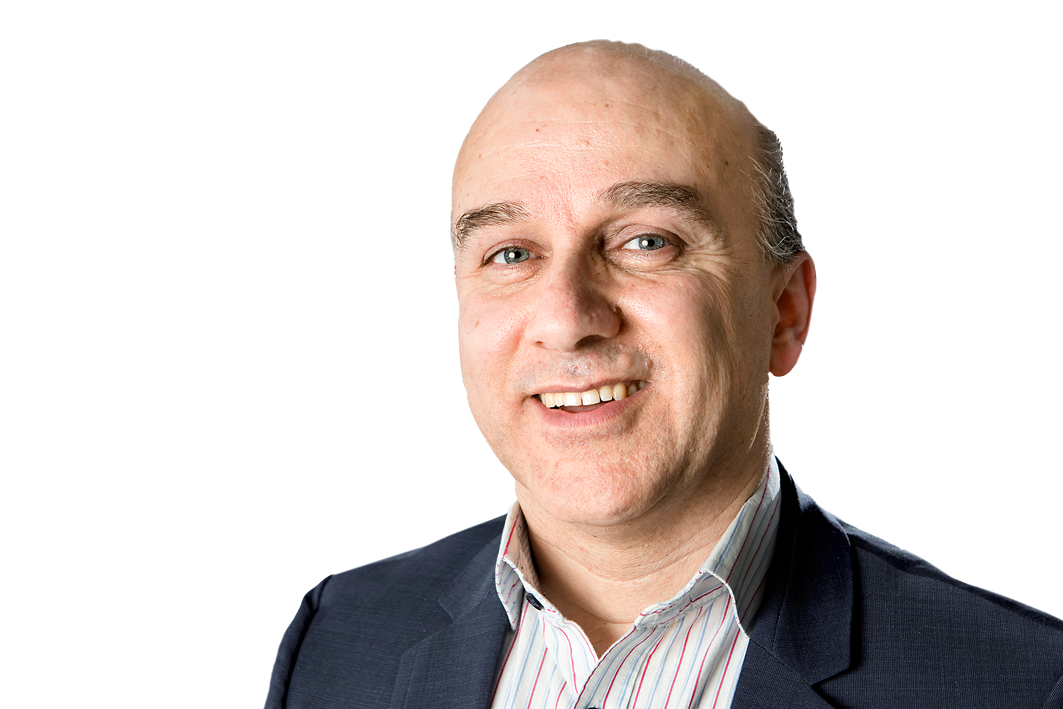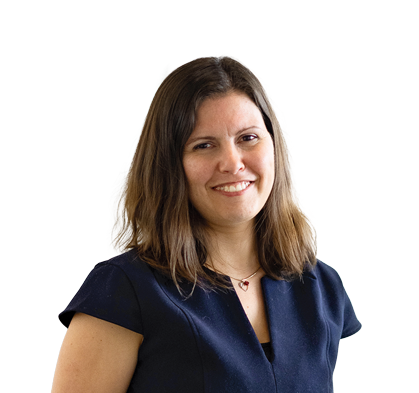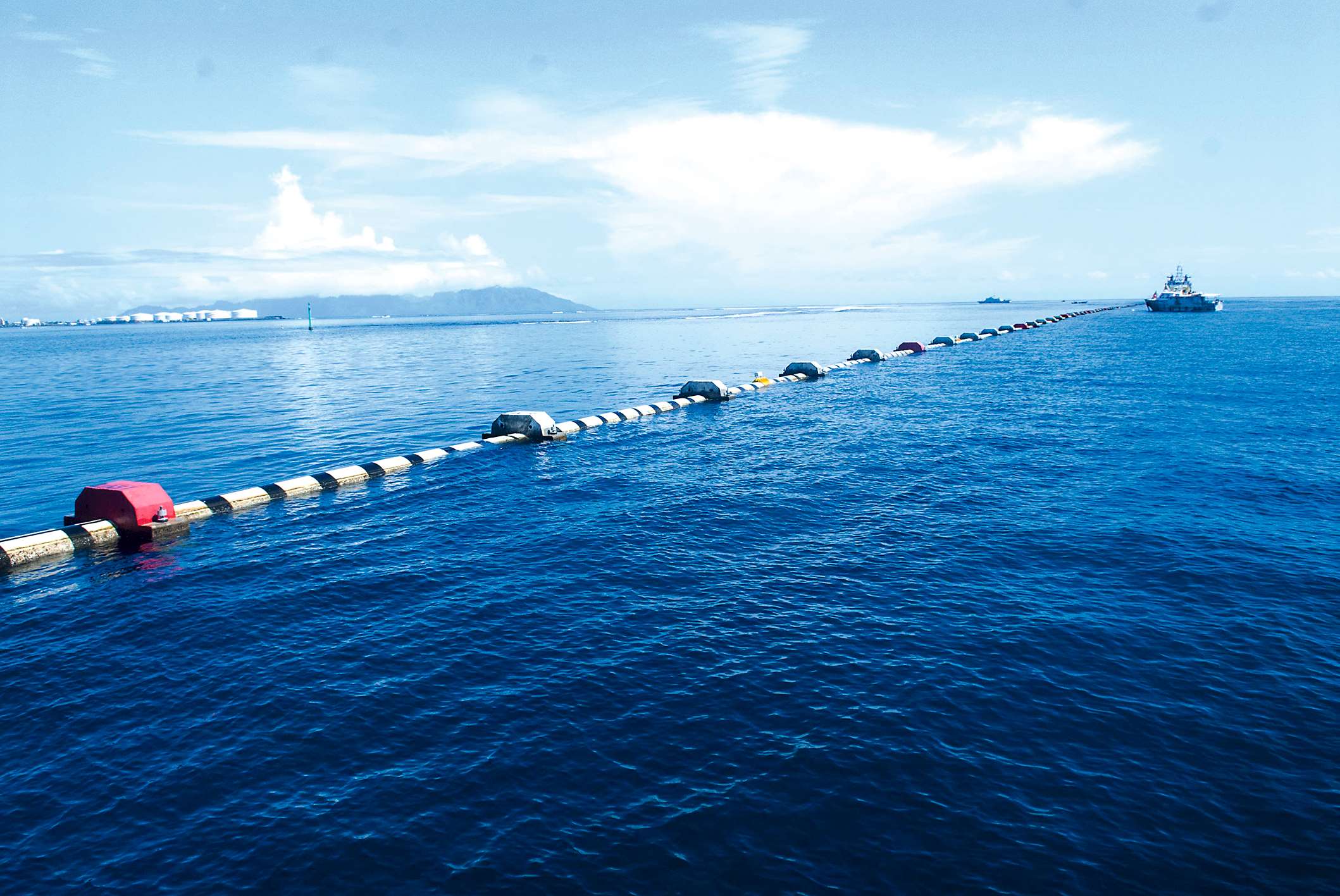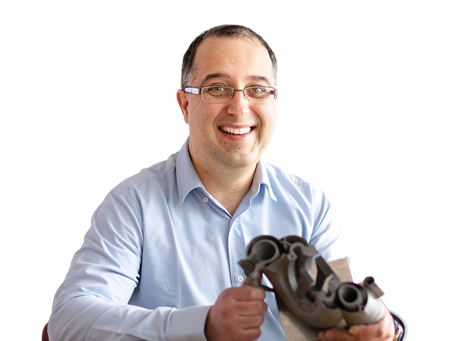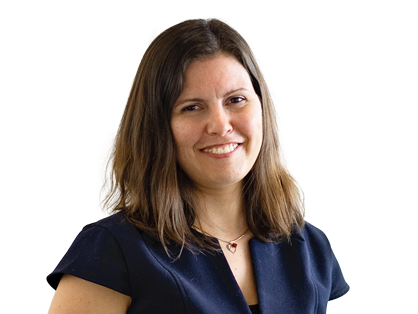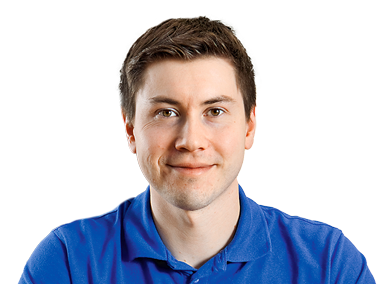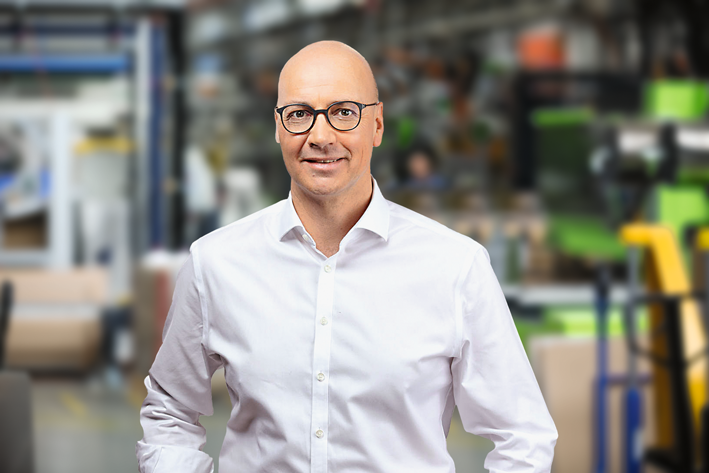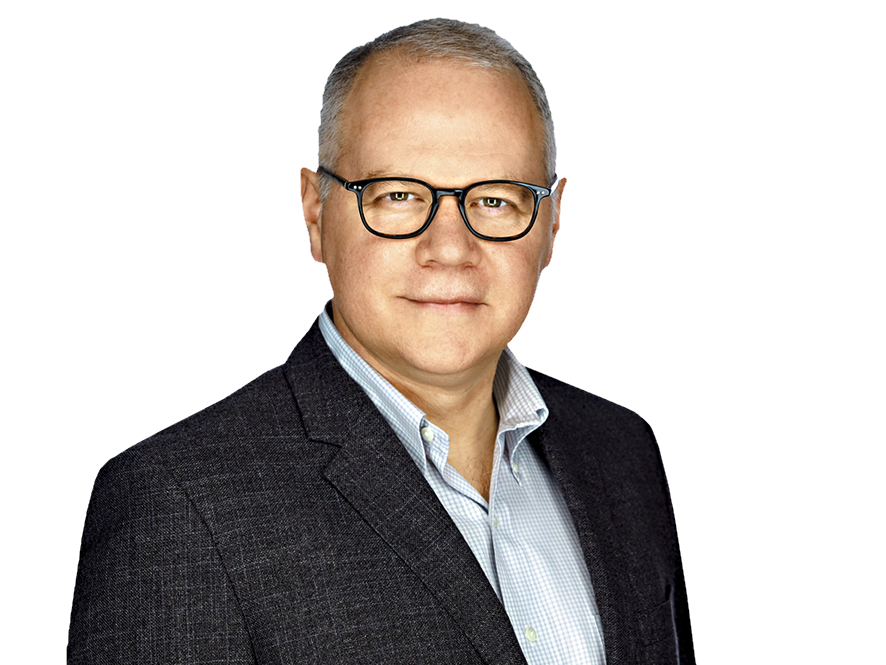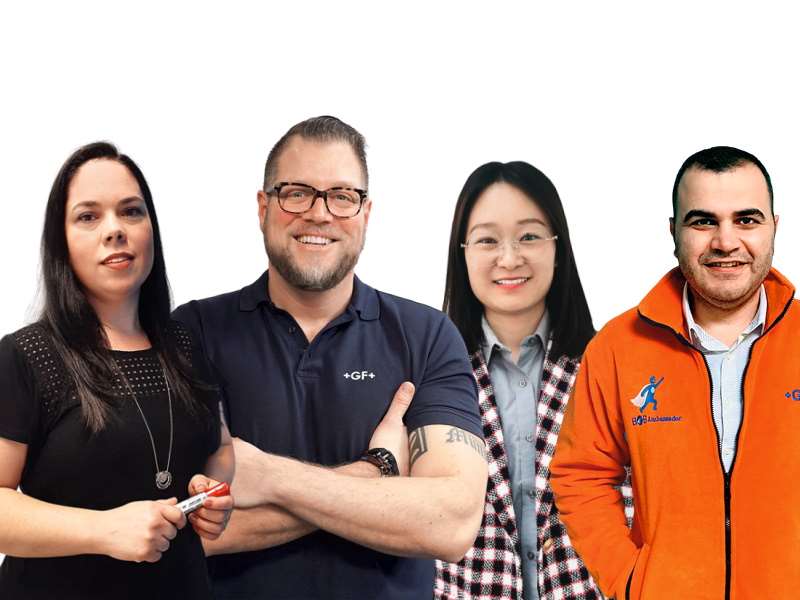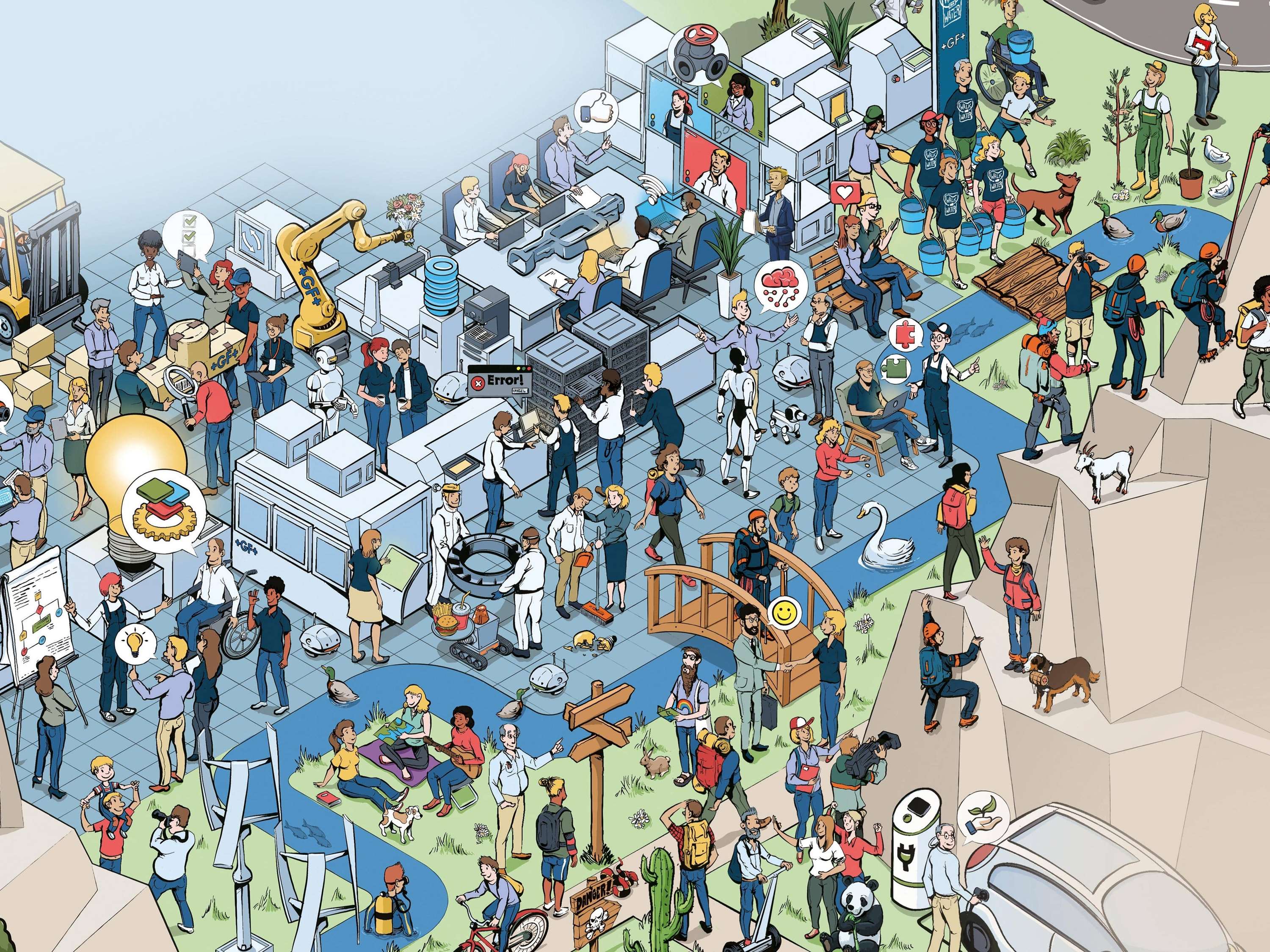Über Ozeane hinweg: Inspektoren auf Tahiti prüften vor Ort die Schweissnähte der Rohre der „Sea Water Air Conditioning“-Anlage, während die Projektleitung von GF Piping Systems aus Europa koordinierte. Kommunikation schaffte das Vertrauen dafür.
Trust promotes success
To innovate, we need the courage to try new paths and the assurance that we are encouraged to do so. That’s why trust - in employees, customers and partners - is essential in GF‘s corporate culture. Three examples from Europe to Oceania show how trust is key to the success of projects in every division.
Trust is the glue that keeps people and societies together, both in private life and in the business world. A fair, honest and reliable environment conveys security – and is a basic prerequisite for motivation, allowing people to take on responsibility and develop their potential. At GF, trust is essential and underpins the company culture.
 © Tobias Gerber
© Tobias GerberSanjay Patel
Position: Global Business Development Manager – Specialized Solutions
Division: GF Piping Systems
Location: Schaffhausen (Switzerland)
Joined GF in: September 1992
 © Tobias Gerber
© Tobias GerberRiccardo Barbone
Position: Chief Technical Officer – Specialized Solutions
Division: GF Piping Systems
Location: Schaffhausen (Switzerland)
Joined GF in: September 1999
Three examples from across the world show how trust, in its many forms, is shaping relationships and projects at GF: From new innovations suggested by employees at GF Machining Solutions, through ambitious research projects with external partners at GF Casting Solutions to challenging customer projects at GF Piping Systems. The last refers to a project that the Specialized Solutions team at GF Piping Systems worked on in early 2021. The job was to contribute to the construction of a sustainable air-conditioning system in Tahiti by ensuring the quality of the welds that hold its central pipe together.
The Sea Water Air Conditioning system (SWAC), as it is called, was to become the biggest of its kind worldwide, supposed to cool the capital’s new hospital with seawater from the depths of the ocean. For this, an almost four-kilometer long, flexible plastic pipe had to be built and immersed 900 meters below sea level. From there, the system would pump 5°C water onto the island to cool the rooms of the French Polynesian Hospital – without CO2 emissions and the additional electricity that conventional air conditioning would need in a tropical region where average temperatures range from 26–29°C (78.7–84.2° F).
GF Piping Systems used their technique called ultrasonic non-destructive testing (NDT) to check the the welds of such a long plastic pipe for the first time. There was no margin for error: The assignment was part of a flagship project by the French-Polynesian government. Once installed, the SWAC would save 2 percent of Tahiti’s annual energy bill – the equivalent of $3.2 million per year.
Sanjay Patel, Global Business Development Manager in the Specialized Solutions Team at GF Piping Systems, recalls the tension at the beginning of the project: “The pressure was high because we had never done a job like this before.” He managed the project, making sure the NDT scanners and external inspectors GF had hired and trained to operate them arrived on time. A difficult task: When the deadline was only four months away, the COVID-19 pandemic was disrupting international travel and global shipments.
 © private
© private © Tobias Gerber
© Tobias GerberThose who dare, win
Sanjay and the GF team in France, who had received the project request and guided the negotiations withthe customer, stayed on top of things: “Communication created the trust we needed to complete the project.” They were on the phone with customer Geocean, which built the SWAC and the pipe using GF welding machines, up to ten times per day, keeping everyone updated on progress and changes.
Communication within GF was also essential. Due to the pandemic, most team members were working from home, but they remained constantly in touch. This enabled them to quickly solve unforeseen issues together, such as finding alternative routes for last-minute flight cancellations or localizing lost parcels.
Riccardo Barbone, Chief Technical Officer Specialized Solutions at GF Piping Systems, took care of the technical details and had daily contact with the on-site inspectors. His team had matched the scanning heads – the pieces of equipment the NDT scanners sat in – to the pipe’s diameter of 710 mm. This meant the inspectors could easily check whether stones, grains of sand, or air pockets were hiding inside the more than 400 welds. In addition, they had developed an algorithm that analyzed the scanning results on-site, giving a green or red light for each single weld. This was a key advantage because once the pipe was submerged in the sea, it would be nearly impossible to fix faulty joints.
Riccardo is still enthusiastic about the cooperation within GF, as well as with the inspectors: “They sent us pictures of themselves posing with our GF equipment. They very much liked working with it and called our patented chain equipment “the magic chain.” They did a great job on site.” Thanks to the trustful collaboration among all parties, GF Piping Systems even managed to finish the job ahead of schedule. “We were confident enough to dare something – and succeeded thanks to that,” says Riccardo.
This is a good description of a concept called “ psychological safety” in science. It was developed by Amy Edmondson, a professor of leadership and management at Harvard Business School. The concept holds that teams only work together successfully if each member can contribute without fear of negative consequences. According to Edmondson, this perceived safety at the workplace has a positive effect on the company‘s performance, because employees are more willing to participate and point out potential risks. This, in turn, is a prerequisite to learn and innovate.
An international project
Experts from all over the world worked together on a project enabling the hospital in Tahiti’s capital to be cooled using seawater.
Six countries, one common job The customer initially contacted GF Piping Systems in Paris (France) for testing of the Sea Water Air Conditioning system (SWAC) in Tahiti (French Polynesia). The local team then brought the Specialized Solutions team from Schaffhausen (Switzerland) on board for the challenging job. Inspectors from Poland, Serbia and the Czech Republic then tested the pipes in Tahiti.

From ideas to innovations
With the goal of encouraging the development of innovative ideas, GF Machining Solutions’ Kickbox initiative has been fostering trust between management and employees in Switzerland since 2019.
The Kickbox team calls for ideas on how to improve a specific area, sustainability for example. Every employee is encouraged to submit ideas. After a first check by the Kickbox team, the employee joins the program, which has three phases. At the end of each phase, employees pitch their ideas in front of a jury with members of the top management. The ideas with the greatest potential and business value receive the green light to enter the next phase.
“It’s great that our management gives personal feedback to all participants.”
Jose Gonzalez, Expert in milling and participant in the Kickbox initiative at GF Machining Solutions
During this process, employees become the CEOs of their own ideas: they can devote up to 20 percent of their working hours to the development of the idea and get access to funds, a mentoring program and expert knowledge if required.
 © Meyer & Kangangi
© Meyer & Kangangi © private
© privateAdina Dorthe, Head of Innovation and R&D, Digital Services at GF Machining Solutions, is responsible for Kickbox. She summarizes its purpose: “We aim to use the power of the crowd, in our case all our employees, to come up with new ideas that might turn into technical innovations or new business models.” Participants use customer-centric and agile methodologies such as Design Thinking, which they can then apply to their regular work. “It is a unique experience for our colleagues to develop their ideas into something real and valuable – and to feel the trust that is placed in them.”
Jose Gonzalez, Expert Milling at GF Machining Solutions, has already presented two ideas to Kickbox. He’s a fan of the initiative: “It‘s great that our management invests so much time in the project and gives personal feedback to all participants. They trust us and reward our efforts.”
Jose is currently working on a new method for reducing the weight of machine components to save energy when operating the finished machine. On the day known as Demo Day in December 2021, he presented this idea – and made it through to the next phase.
Admittedly, Jose doubts that his idea will ultimately be implemented because it would be very expensive. But for him it feels like a victory nonetheless: “Working on my idea is both fun and fulfilling. I especially enjoyed getting to know colleagues from other sites.” He adds that today he is much more satisfied with his work than he was before his Kickbox participation.
Indeed, Jose’s daily work routine has permanently changed due to new methodologies he got to know and the exchange with colleagues. This proves that a work environment with a high degree of psychological safety is essential for employees like Jose to take the plunge and strive for innovation.
A complex part made of powder
Sometimes a team needs external members to score a win. This is the case with a current project from GF Casting Solutions. The A³-4AM project is a collaboration among the GF Casting Solutions technology team in Schaffhausen (Switzerland), the GF AMotion Center in Stabio (Switzerland) and a research team from Inspire, the leading Swiss competence centre for technology transfer to the mechanical, electrical and metal (MEM) industries. They are cooperating to develop a new aluminum alloy for additive manufacturing.
Put simply, additive manufacturing is industrial 3D printing, and the alloy is the ink. Except that in this case, it’s not a liquid, but a powder. To print a metal component, a laser heats this powder and forms the desired shape, layer by layer. “This way it’s possible to create highly complex shapes that are both lightweight and extremely stable,” says Sebastian Wierschke, Technical Expert Additive Manufacturing at GF Casting Solutions, who oversees the project.
“We share sensitive information with our research partners. Even with contracts signed, trust is a must.”
Sebastian Wierschke, Technical Expert Additive Manufacturing at GF Casting Solutions
At its AMotion Center in Stabio, GF works with the latest additive manufacturing technologies and machines from GF Machining Solutions to create highly complex components. However, the alloys currently in use are not an optimal choice for the print process as they are expensive and not very sustainable.
Therefore, Sebastian and the colleagues in Stabio wanted to invent a new high-strength aluminum alloy. It should not contain any rare earths, should meet the high requirements of the aerospace industry, and be priced similarly to alloys that are currently in use. The goal is to use the additive manufacturing process to create highly complex components that can withstand blazing temperatures – aircraft turbine blades with built-in cooling lines or particularly shaped exhaust pipes for Formula 1 racing cars.
 © Tobias Gerber
© Tobias Gerber © Tobias Gerber
© Tobias GerberSebastian explains that trust plays a major role in this project because the GF team shares sensitive information with Inspire. “Without mutual trust, this close collaboration would be impossible,” he says. The shared data is valuable. In addition to details of material selection and processing procedures, it also includes the essence of years of customer feedback. Inspire has been in contact with GF for years for other research projects. “Thanks to this good and ongoing cooperation, both sides took a leap of faith,” says Sebastian. Contracts lay down the rules of the cooperation. They also determine what happens if the research is successful and a new alloy developed: GF is entitled to sign a patent while Inspire is remunerated.
The current project started in March 2021 and is scheduled for completion in July 2023. Sebastian and the colleagues in Stabio regularly discuss its progress and the next development loops with Inspire. For now, the research looks promising. Regardless of the final result, Sebastian is already benefitting from the collaboration: “I’m gaining a lot of new insights from the partnership that I can apply to other areas of my work.”
 © Tobias Gerber
© Tobias GerberThe examples of Sebastian, Sanjay and Riccardo, and Jose and Adina show how trust creates a working environment in which employees take risks and succeed as a team. The three examples also illustrate that project success is not the only goal. The knowledge gained and the encounters along the way are valuable and help to create a collegial workplace where people – and their ideas – can thrive.
Further impressions:
Read the other spotlight articles here:
The energy that propels us forward
This is what CEO Andreas Müller has to say about the current spotlight topic “Trust.”
How safety creates spaces
A work environment based on trust is a factor in the success of a company. Prof. John Weeks explains in an interview how to unleash the full potential of teams.
What was the biggest risk you’ve ever taken?
In life, there are always situations in which you need to take a risk. Four GF employees talk about risks they’ve taken in their professional and private lives and how they eventually mastered them thanks to a bit of trust.
Creating a trust-based environment
Each and every one of us is necessary to create a world full of trust in which every employee can develop their potential. An infographic shows how this could work at GF.
